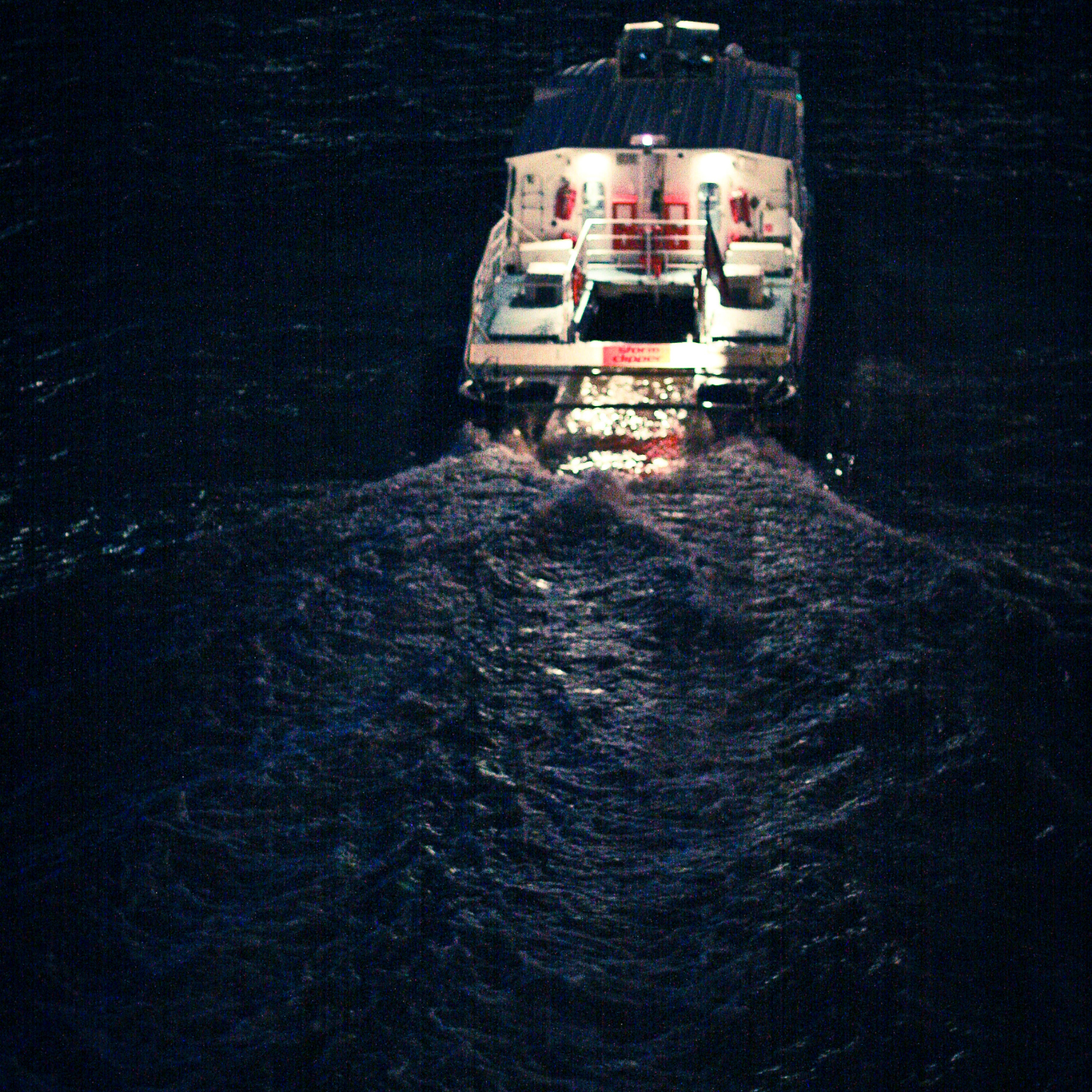NIGHT BOATING 101
Night boating is great fun and can be magical. Just think of the starry skies, the moon reflecting its silver light on the water, and the shape of the land nearby shining in the dark.
You can’t spontaneously head out on your boat at night if you’ve never done it before, though. There are some principles you need to learn in order to keep your boat and crew safe.
IS BOATING AT NIGHT SAFE?
Just like with boating during the day, night boating can be safe if done responsibly and you use the right equipment. There are risks, of course, but these can be managed efficiently by a competent captain.
As always, you need to follow navigation rules and keep a proper lookout. However, due to the darkness, the visibility is greatly reduced at night, so you need to stay extra alert.
WHAT WAS USED TO NAVIGATE AT NIGHT IN ANCIENT TIMES?
Before modern technology came along, sailors and mariners navigated using the stars. Celestial navigation involved taking measurements (sights) of the angular distances between celestial objects and the horizon to find the boat’s position. These were taken using a sextant.
Nowadays, only few romantic boaters learn celestial navigation and carry a sextant onboard. Typically, some people take a course before crossing an ocean. It’s a great way to keep busy during the trip and to feel confident you won’t get lost, should all your instruments break down.
HOW DO YOU NAVIGATE A BOAT AT NIGHT?
Boating at night is slightly different. Your visibility is greatly reduced, so you need to rely on lights and sounds to find your position and what’s around you.
Know what different types of lights mean
Remember when you had to learn what a certain type of light represented on the boating course? Revise those notions. You need to know what represents a lighthouse, a fishing vessel, an anchored sailboat, and more.
Depending on what’s on the horizon, you may need to make course adjustments. Non-moving lights will give you feedback on where you are, allowing you to point out different objects on the chart. Use a combination of your chart and sight to make decisions. Remember that long-range lights can appear closer than they actually are.
Keep track of moving lights
If you spot a moving light on the water, there’s probably another vessel on the horizon. The nav lights on a ship, fishing vessel, or boat indicate the direction in which it is moving. Try to figure out in which direction it’s moving and if that creates a problem for your course. Keep a close eye on it - it may change course, or it may stop to fish.
The COLREGs dictate that you should avoid a collision at all costs. So if the other boat isn’t giving you right of way and they aren’t getting back to you on the radio, simply act well on time. An evident, big course change will show the other vessel that you are taking avoiding action.
Want to learn more about boat navigation lights? Head over to this article.
Use all the instruments at your disposal
If you can afford it, equip your boat with radar and AIS - these will give you lots of extra information. The AIS will alert you of other vessels around you, which have AIS on board. Radar will show any objects on the water, including vessels without AIS and big logs.
DECKEE’S NIGHT BOATING TOP TIPS
We’ve collected the top tips for boating at night from the Deckee team.
Slow the boat down
Having reduced visibility means that you can’t judge distances very well and you won’t be able to spot crab pots and unlit buoys. By slowing down, you will have extra time to react and change course and you will hit floating objects less violently. Don’t get on plane.
Preserve your night vision
It takes about 20 minutes for your eyes to adjust to the darkness, but only a few seconds to lose your night vision. So try to preserve it as much as you can - dim the instruments’ lights, only use red lights on board, and don’t turn on cabin lights. Any light can impact your night vision, so don’t look at the instruments too often.
Listen up
Use your ears and don’t wear earplugs or play loud music. You’ll need your hearing to help your eyes out in reduced visibility. This way, you’ll be able to hear engines approaching, fog horns, and more. Many small boats don’t have bright lights and it’s hard to spot them for a higher vessel.
Dock with caution
Docking should always be done in daylight, if possible. So if you’re just an hour or so from sunrise, you may be better slowing down or waiting near the marina. If it’s gotten late and you need to head home, approach the harbour carefully and dock with extra caution. Only go as fast as you’re happy to hit the dock.
Check that all lights work
Before setting off, you’ll want to make sure that your nav lights, torches, and headlights work. While you may not need your headlights, working nav lights are essential at night.
Avoid anchoring out
If you can, don’t get to an anchorage in the dark. Finding a good spot and setting the anchor can be challenging because it’s very difficult to judge distances. Moreover, taking transits at night is rather hard.
If you absolutely need to stop and anchor, don’t rush the process - take all the time you need. Make sure you set your anchor properly, because figuring out if you’re dragging will be quite difficult in the dark.
Boating at night is fun and romantic, but it should be done only if you have the knowledge and confidence to do it. If you follow the principles of night navigation, you will have a fabulous time.


